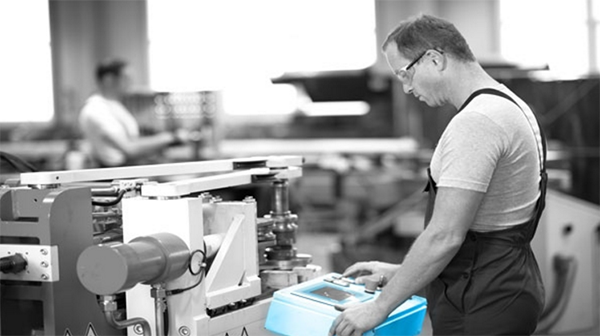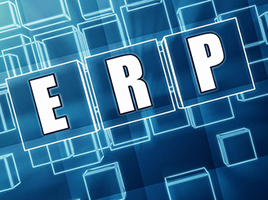
ERP News – worldwide – erpnews.com – Manufacturers focus on things like quality, equipment maintenance, profit, on-time delivery, and customer satisfaction. But, as a manufacturer, the last thing you want to think about is the age of your ERP software. Yet there you are, missing out on new features and innovations that could help your operations and your customers. But you’re not taking advantage of them. Why? Because you’re stuck in “revision prison” — a world where your company constantly fights the battle of either falling behind or taking on those painful, disruptive, and costly ERP software upgrades.

Oftentimes companies don’t think about the pitfalls of their aging ERP software systems. These shortcomings impact operations, revenue and your future, and varying data suggests that more than half of ERP customers are on versions two releases old or older. Here are three common challenges faced by manufacturers stuck in ERP revision prison and a plan for a way out.
1. The Money Pit
Legacy ERP software vendors make their money from lucrative annual maintenance contracts. They derive profit from charging roughly 18–40 percent of your total software license values annually to provide bug fixes, customer support and access rights to new software versions.
Those charges, however, don’t include the true cost to upgrade to those new versions. Planning, consultant costs, and time away from core activities add significant costs above and beyond the large, recurring annual payment. So you face a dilemma. Continue to pay for support on dead-end software versions, which won’t include significant new feature development, or pay even more to upgrade to a newer version. What a choice! If you stay on the existing version, perhaps to avoid the pain of an upgrade, you continue to pay an enormous amount of money for outdated software.
How about just installing those new features on your existing software version? Well, in most cases you can’t. Software vendors don’t often back-port new features to old versions. You’re then stuck either with an inability to leverage new features or having to incur extremely high customization costs to make those new features work with old versions. Neither is a great option.
2. The Deal You Can’t Refuse
Maybe you decide the version you currently run works good enough, and you willingly fall behind because you are content with what you have. This might work for some time, you get an occasional bug fix in exchange for your massive maintenance and support payments, but you more or less just ride out the contract. At some point, however, the vendor moves on and decides to stop supporting old operating systems or sunsets old versions — including yours.
Now what?
Your company faces becoming isolated on an old version with no future support for it from the vendor. There are just too many disparate versions out there for the vendor to manage, and they have to draw the line somewhere. And your version didn’t make the cut. Another scenario involves regulated industries. If new regulation or compliance mandates arise, ERP vendors will be forced to comply. Whether through new features or updates of existing tracking and traceability, your company may need those software capabilities to meet customer requirements. You are forced to that new version whether you want it or not.
The good news is the ERP vendor is more than willing to help in that situation by offering an unpleasant choice. You can remain on your soon-to-be unsupported version and, if something goes wrong, your company is left to deal with it. Or you can upgrade to the latest version, often incented by the vendor through discounts or waived fees in exchange for you signing a lucrative (for the ERP vendor) new long-term contract. And this is the ‘good news’ option! This upgrade often turns out to be a full reimplementation and can cost as much or more than the initial implementation years ago. Effectively, this isn’t a migration from one version to another, you’re truly starting over.
Neither of these options are particularly appealing, but without other options or simply because you don’t feel any other vendor solution will provide a decent alternative, you opt for the forced upgrade. This has an enormous cost and starts you down a road where you’ll eventually end up in the same place, facing the same ugly decisions.
3. Running in Quicksand
If you’ve ever bought a new car, you know the sinking feeling you have shortly after the excitement wears off. Researching new cars might have been exhilarating, test driving was fun, negotiating price was neither here nor there, but you get the keys and drive off the lot and are feeling content. Then, you see the new model of your car become available, maybe only weeks or months after your purchase and you realize that you’re now missing out. It could be a revamped look and feel or several key new features that you really want that were just made available.
You have three choices. Trade in and buy the newer model, but that makes no economic sense given that your vehicle has already depreciated in value below the price you paid. Another option is to perhaps pay someone to retrofit your car with that new capability, if that’s even possible. The last is to keep your existing model, stew over not having the newest options, and plan another purchase somewhere down the road.
No matter which of these you choose, however, you’re effectively still always behind. Even if you choose the path to upgrade routinely, new features are being developed while you’re upgrading. Your company becomes that stereotypical lab rat on the wheel, constantly churning and running but never being able to truly reach the prize in front of you. You’re running in quicksand, working hard but not really getting anywhere.




















